A Walk Through a Synagogue Slated for Demo on Prospect Place in Crown Heights
This Moorish and Art Deco house of worship was a nice-looking brick building, with an attractive half-rose stained glass window.

Editor’s note: Lifelong Brooklyn resident and author Ellen Levitt has written four books, including “The Lost Synagogues of Brooklyn,” published in 2009 by Avotaynu. The views expressed here are her own.
In October 2018, 554 Prospect Place was a nice-looking brick building, with an attractive half-rose stained glass window. Now most of it has been torn down, so that only part of the front wall and greatly diminished parts of two sides remain. The roof and the rear wall are gone and the interior is fully gutted. Built as a synagogue in the 1920s, it became a church in the early 1970s, and is now a woebegone mess. Multi-unit housing will be built on the site in its place.
This block of Prospect Place, between Franklin and Classon Avenues, is a moderately interesting street. Much of the block on the north side is taken up by the former Jewish Hospital of Brooklyn, which was converted to apartments. On the south side is a health care center that is part of the Interfaith Hospital system, as well as a ramp entrance to the Park Place station of the Franklin Avenue Shuttle. The block also has several other smaller apartment buildings, one restaurant (Gueros) and a corner deli at Franklin.
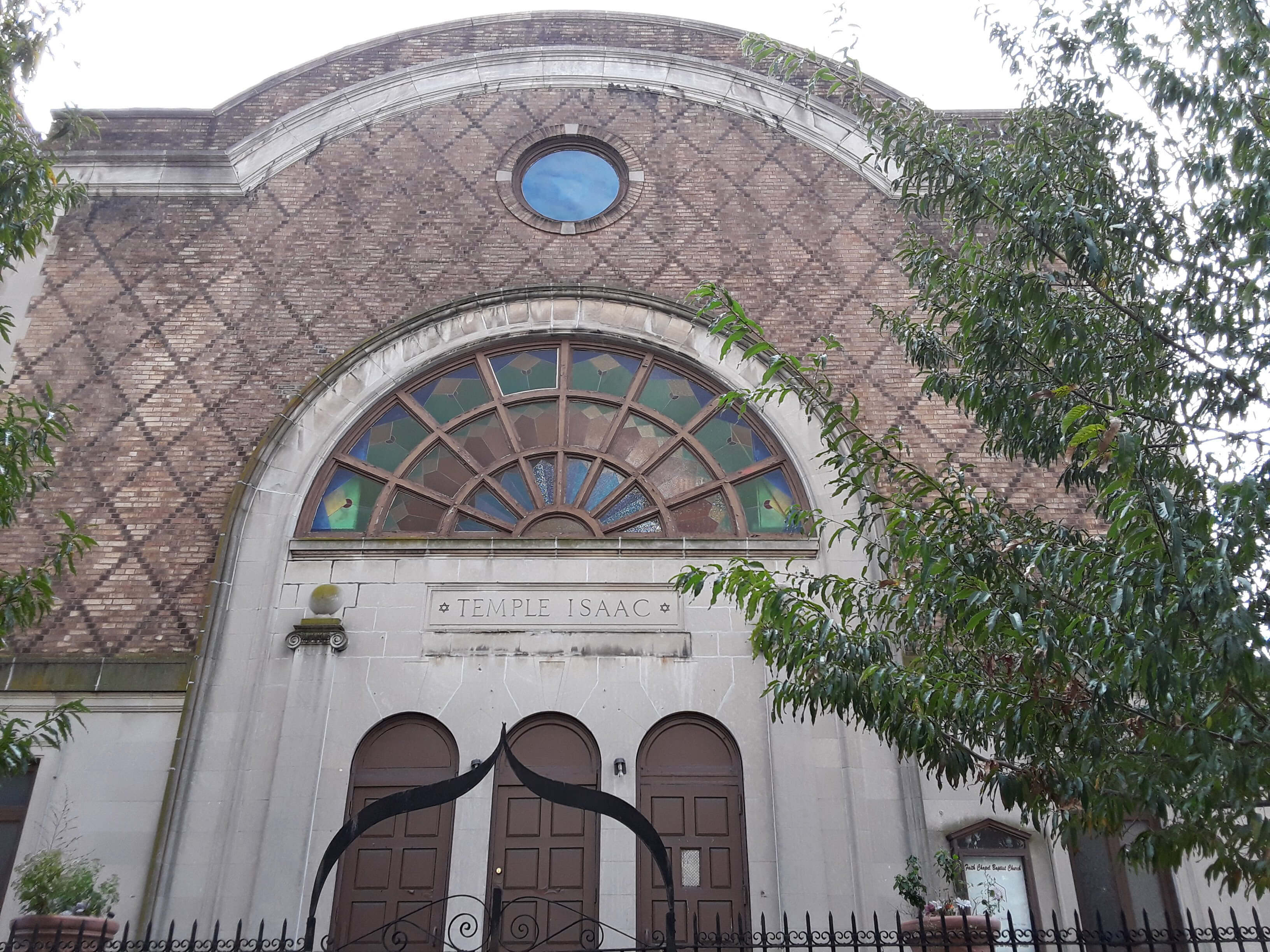
Why should we care about the demolition of an old urban house of worship? The outside may have looked attractive but the inside was rundown. To most people, it was an unremarkable site.
But some of us do care, and I feel obligated to tell its story. In fact, Brownstoner ran a story about 554 Prospect Place some years back, and another on the nearby hospital. These buildings reflect the neighborhood’s ethnic history, as well as popular architectural styles of the early 1900s.
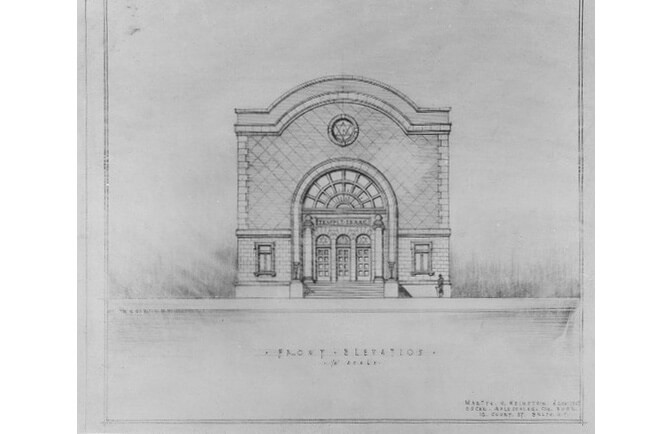
Temple Isaac (Ohel Yitzhack) was founded in 1902. They built a shul in 1922, designed by Martyn N. Weinstein, and it cost $64,000. Its style was a mix of Moorish and Art Deco influences. Weinstein later changed his surname to Weston, and he designed two other Brooklyn synagogues; both were placed on the National Register of Historic Places.
Louis D. Gross was a rabbi emeritus of the congregation (he also served as rabbi at Temple Israel, and was publisher of the Brooklyn Jewish Examiner). Congregants and visitors came from the neighborhood and the hospital community.
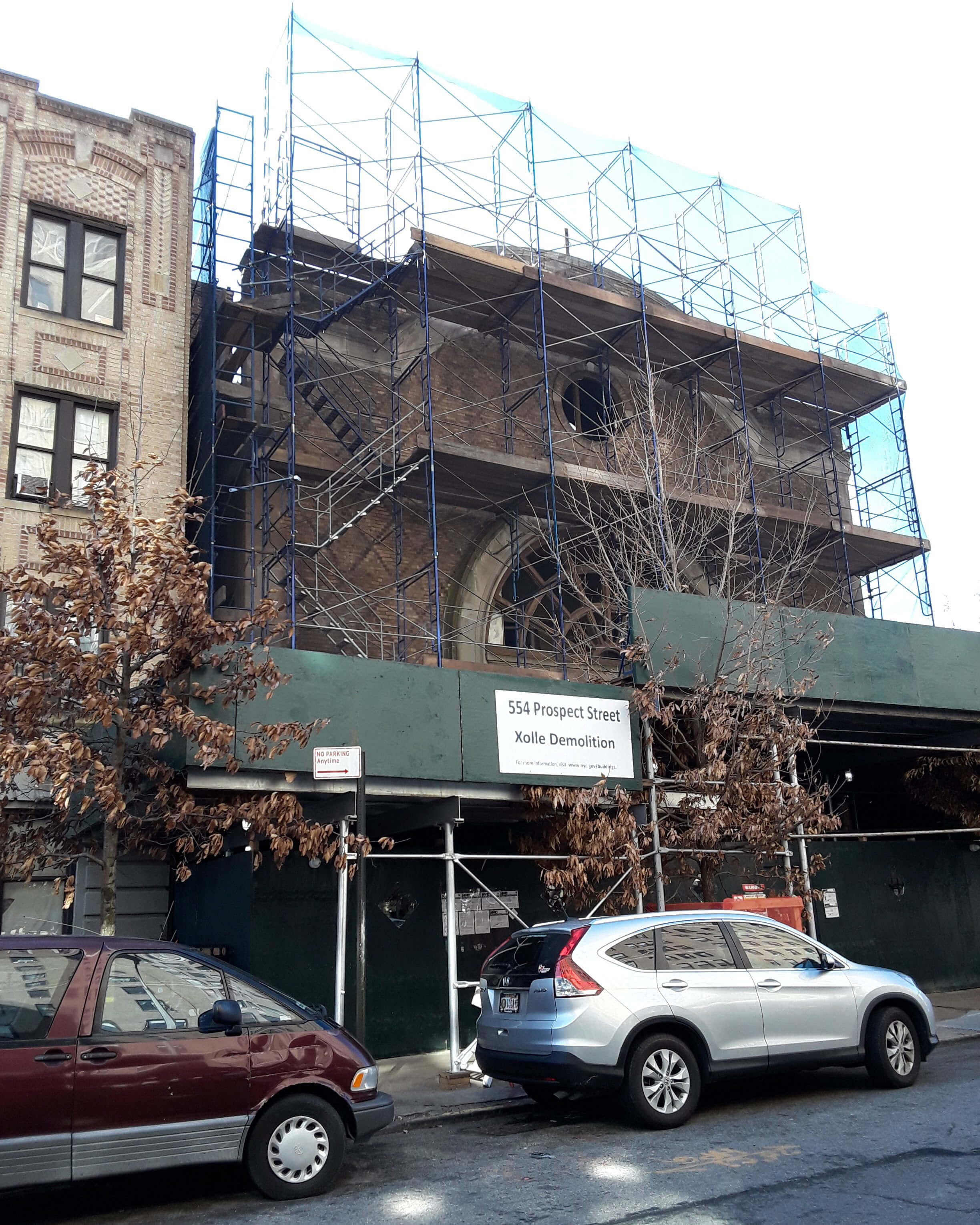
But the demographics of the neighborhood changed, and by 1972 the Jewish congregation had sold the building to Faith Chapel Baptist Church. Temple Isaac later merged with the Prospect Park Jewish Center, formerly on Ocean Avenue, and moved into a church (!) at 1419 Dorchester Road. This congregation is still active.
Faith Chapel’s senior clergyman was the Reverend R.E.L. Hardmond. The church group retained much of the interior Judaica in the main sanctuary and in the lower level social hall, and some exterior items such as the synagogue’s name. Thus both the synagogue and church names were visible for several years. But the church group vacated the building in 2016, and the future of the site looked grim.
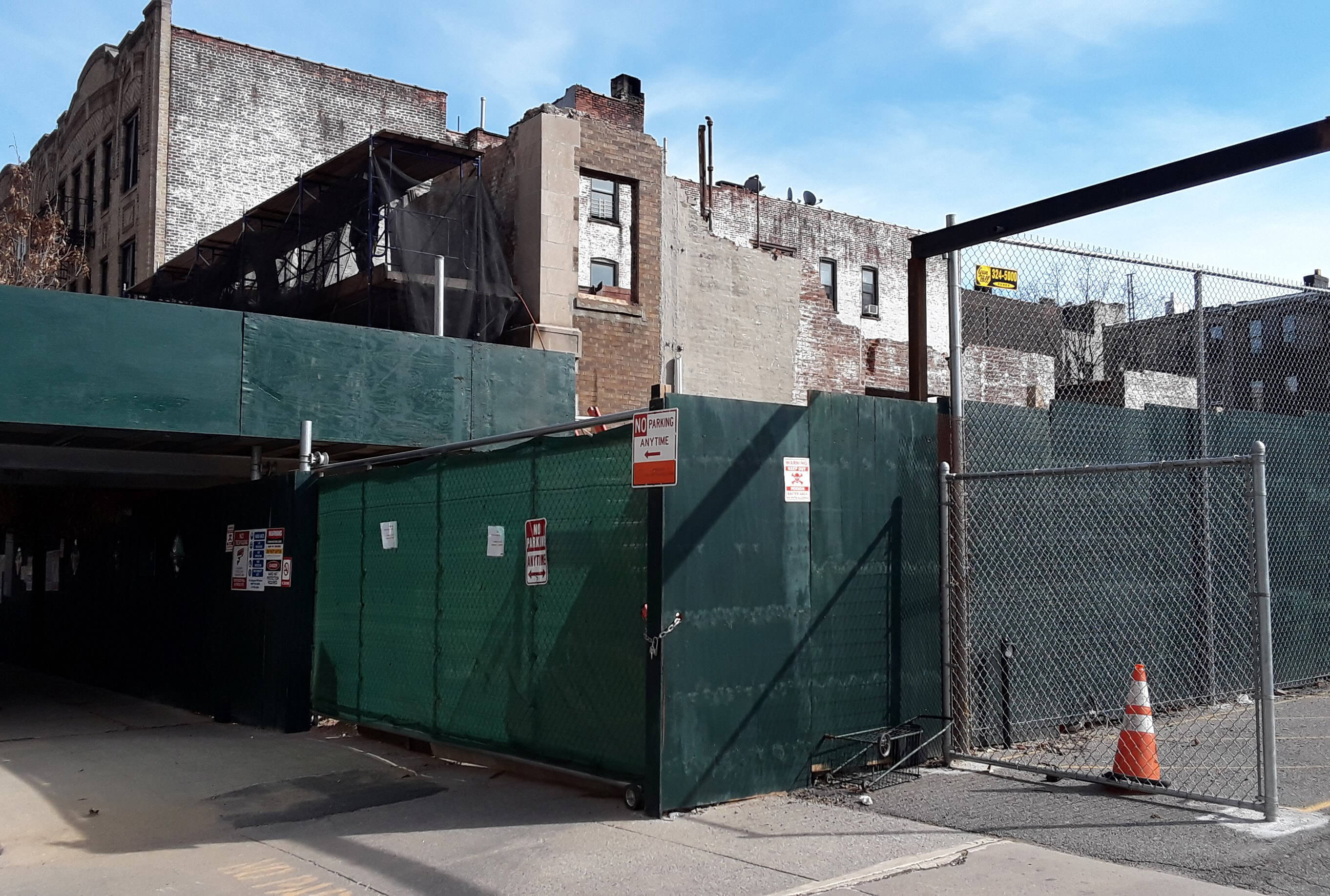
I first became interested in this building while researching and writing my book “The Lost Synagogues of Brooklyn.” I’d read about it in a newspaper and added it to a roster of more than 80 other former synagogue buildings throughout Brooklyn. Twice I led Sunday afternoon bicycle tours of former synagogues in this neighborhood and surrounding areas, and we biked there. In 2015 a few congregants welcomed us inside and we looked around briefly. But I stopped by another time, in 2016 or 2017, and found no one present even though the door was open. I slipped inside and took note of how decrepit the lower level had become, with the floor rotting away and furniture and other items laying in disarray. I wondered what was happening.
From the outside it seemed to be in decent shape but by late autumn 2018, I saw scaffolding around the front, and a handful of work permits and other documents taped to a construction fence erected on the sidewalk side. I realized this was the beginning of the end of old Temple Isaac. And I learned online that the building had never been landmarked.
On my Facebook page “The Lost Synagogues of New York City and New Jersey,” I mentioned that the fate of Temple Isaac seemed bleak, and I posted photos. A man who follows the page made inquiries for me, and helped arrange for me to see the interior on the morning just before the demolition would begin. I knew I should bear witness to this sad event, and document what remained.
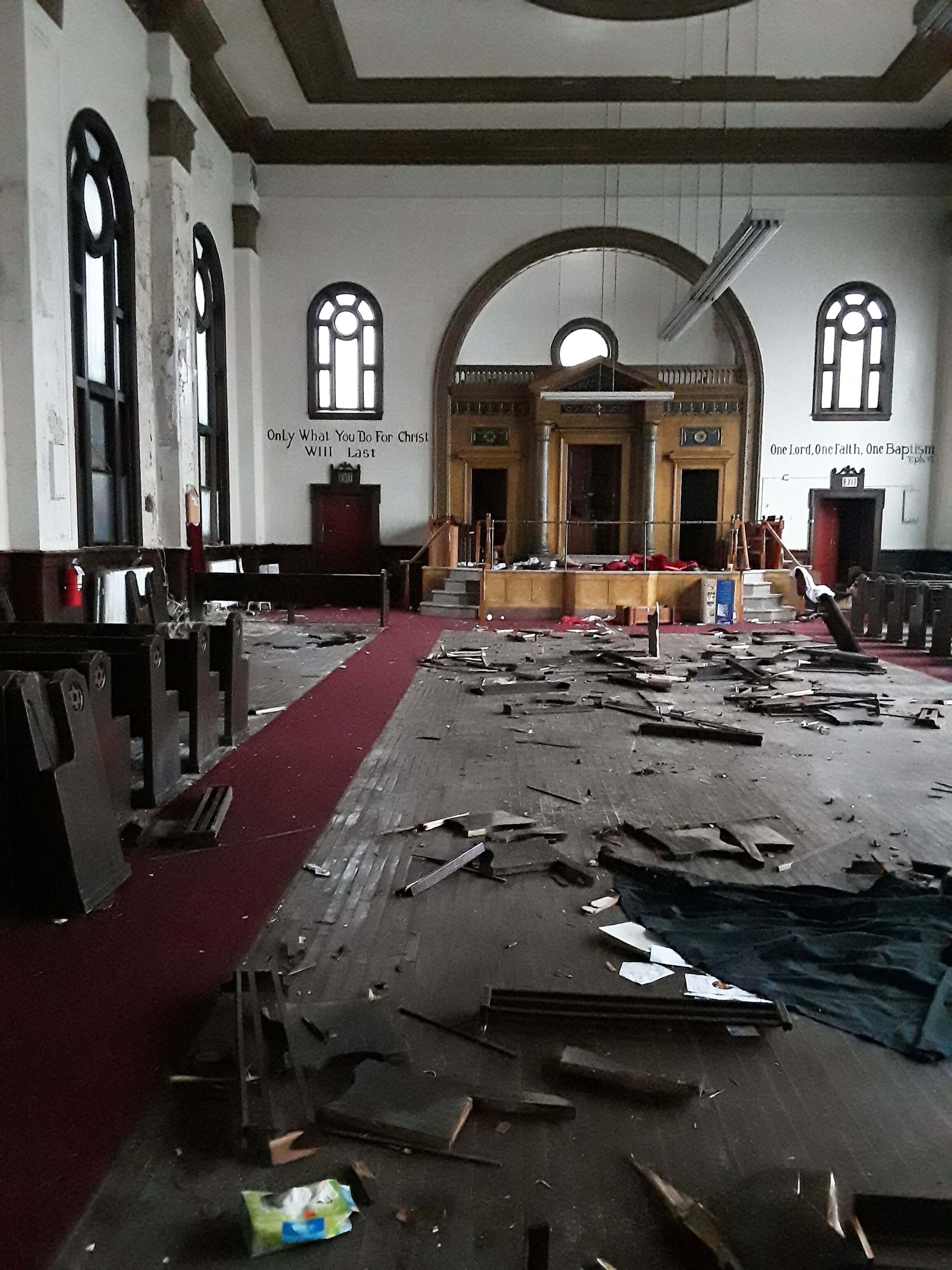
Early morning on January 16 I arrived at the front door. I waited about 30 minutes in the cold before I was finally allowed inside (the work crew were unsure of letting me inside without a helmet). I paced throughout the main sanctuary several times, snapping photographs and taking note of nearly every detail.
There were three pianos near the front stage; were any to be saved? More than 20 heavy wooden pews remained in the sanctuary, some in decent shape, others nearly destroyed. Prayer books and bibles were strewn about the front. Sections of the walls were worn away and there was peeling paint throughout. Metal window frames were askew. Dust everywhere. I inquired about the Ner Tamid, the eternal light which had remained from the synagogue. Someone from the demolition company was keeping that.
[instagram_embedding url=”https://www.instagram.com/p/Bt2UdWoHu5I”]
In the midst of this mess I found two laminated memorial cards from a woman’s funeral service. I picked them up and felt a particular sorrow for this woman, whose story would just be thrown into the trash with all the wood, bent nails and metal scraps. I tucked the cards into a bible that was in good condition, and took that with me.
I walked upstairs and gazed at the half-rose window which had been the special feature of this building. I admired the colors and the condition. They were still bright that day.
Within two weeks the glass was all gone. Then the side windows were gone after several more days. Then the roof was torn down. Later the sides were diminished, bit by bit. Then the bricks that had surrounded the half-rose window were removed.
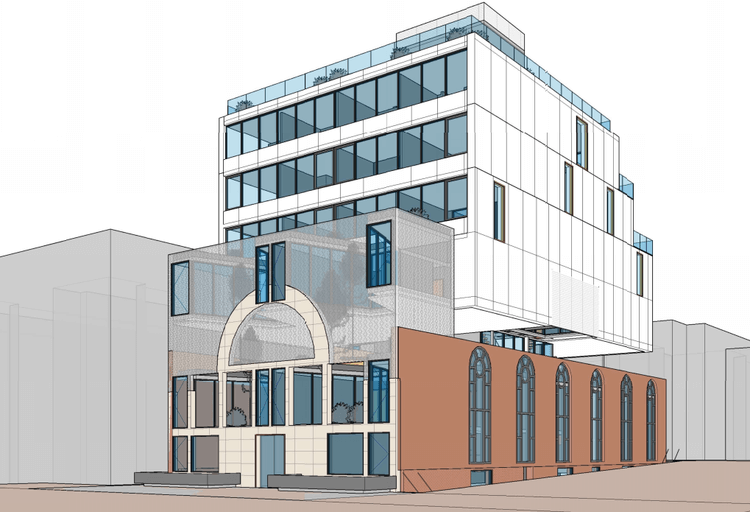
Plans for 554 Prospect Place apparently changed over time. Komaru Enterprises at one point was supposed to “oversee its restoration,” but that didn’t happen. A six-story, 22-unit apartment building is planned, according to an application for a new building permit filed in 2018.
Renderings published by Madsen Consulting Engineering show the new building will have an arched doorway in front and sanctuary-style windows along the side, apparently inspired by the original, and several modern glassy stories above. A demolition permit for the old building was issued in January. On the afternoon of March 27, it looked to me as if the original entryway arch and the side walls were being taken apart.
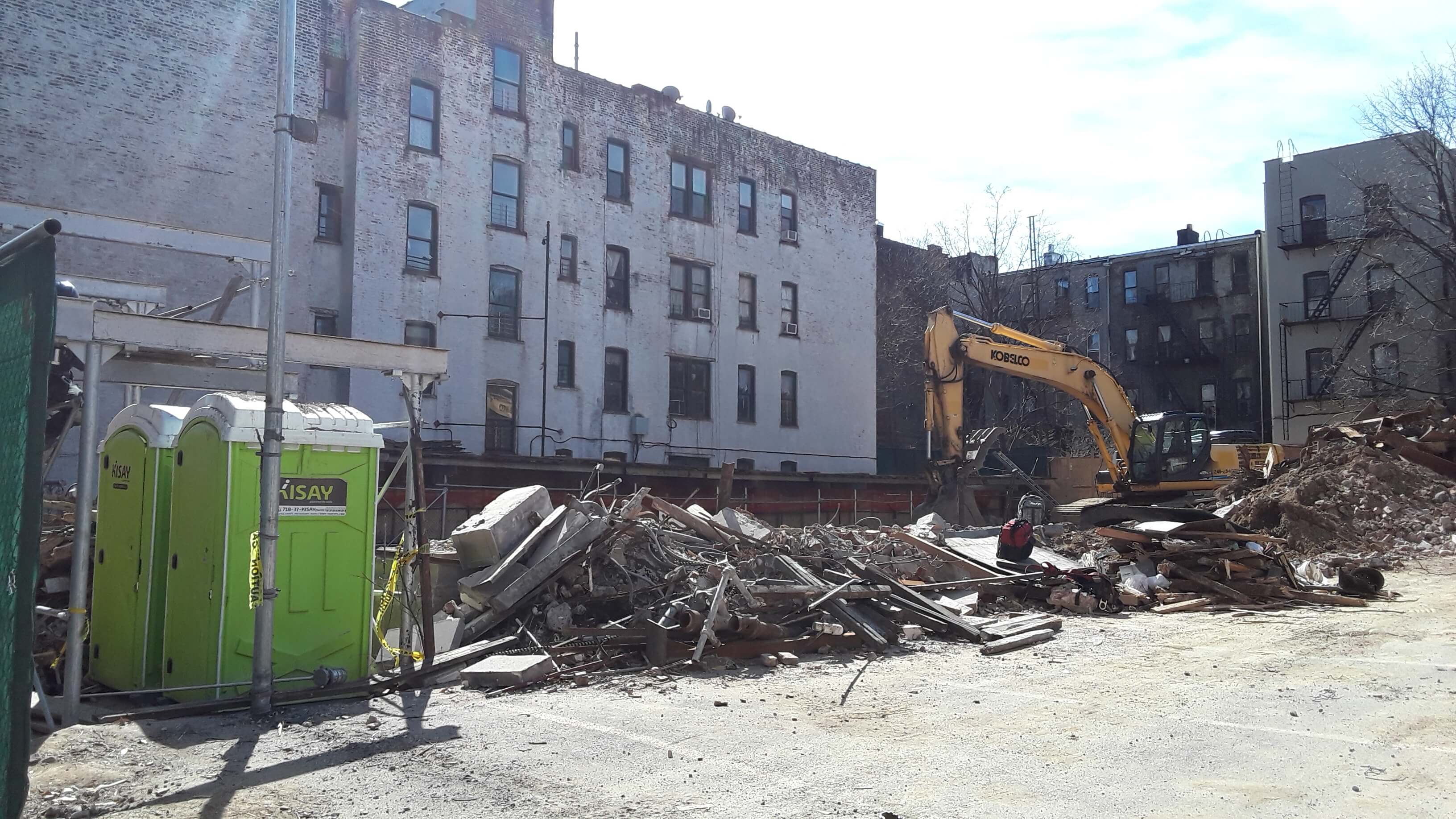
Alas, the old temple will be gone, and a modern structure built in its place. Pictures remain. The congregational name lives on in a different Brooklyn neighborhood. But a stylish 1920s building is gone. Brooklyn is a bit poorer for this.
[Photos by Ellen Levitt unless noted otherwise]
Related Stories
- This Bath Beach Synagogue Was Designed by Emery Roth Before He Was Famous
- Past and Present: From Synagogue by Famous Architects to Banal Pile of Bricks in Bed Stuy
- Walkabout: The Temples of Bed Stuy and Crown Heights North
Email tips@brownstoner.com with further comments, questions or tips. Follow Brownstoner on Twitter and Instagram, and like us on Facebook.









What's Your Take? Leave a Comment